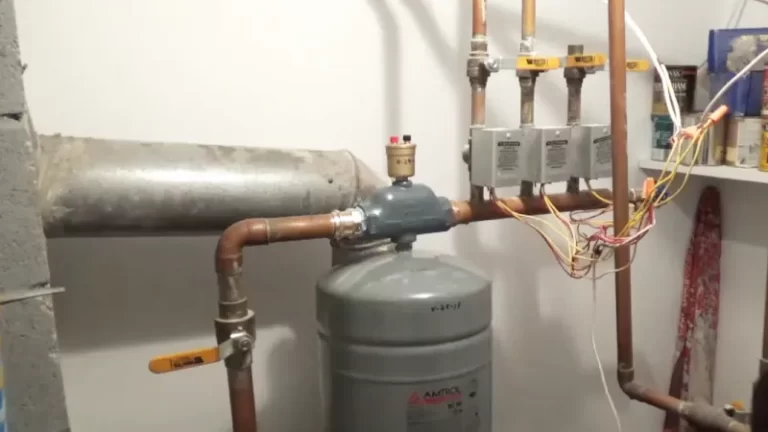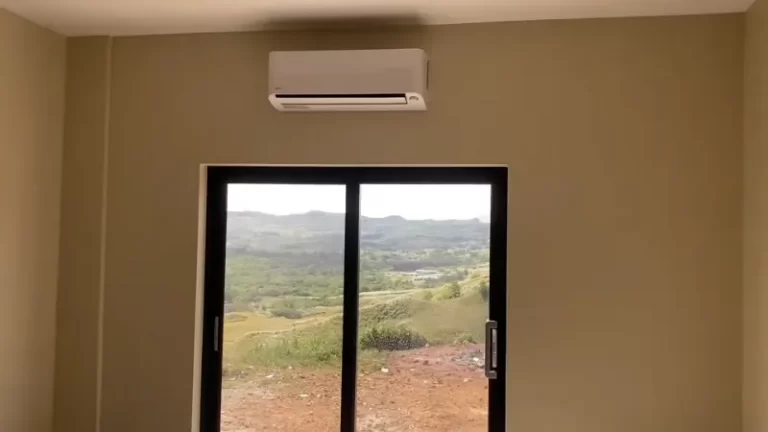How Many 12 Volt Batteries to Run an Air Conditioner? – Factors and Calculations
Running an air conditioner off-grid can be a challenge, but it’s not impossible. One of the biggest hurdles is determining how many batteries you need to power the AC unit. The number of batteries required will depend on several factors, including the size and type of the air conditioner, the battery type and capacity, and the length of time you need the AC unit to run.
In this article, we will explore these factors in detail and provide you with the information you need to determine how many 12 volt batteries are required to run an air conditioner.
You'll Learn About
How Many 12 Volt Batteries to Run an Air Conditioner
The number of 12 volt batteries needed to run an air conditioner depends on several factors, such as the size and efficiency of the AC unit, the type of batteries used, and the amount of power required for a specific duration.
Generally, it is recommended to have a minimum of four 12-volt batteries to run a rooftop RV air conditioner. However, this will only power the AC unit for about one hour maximum, assuming a standard flooded cell battery.
To run an air conditioner for an extended period, more batteries are required. For instance, to run two air conditioning units for eight hours, it may need about 16 to 20 flooded-cell, 12 volt batteries, with a capacity of 100 amp-hours each.
The battery bank capacity required to power an air conditioner can be calculated by dividing the energy consumption (in watt-hours) by the battery voltage (12 volts) and the depth of discharge (DOD). Assuming a 5000 BTU air conditioner running for eight hours a day and consuming an average of 2400 watt-hours, the battery bank capacity required can be calculated as follows:
Battery Bank Capacity (Ah @ 12V) = (Energy Consumption (Watt-hours) ÷ 12) ÷ DOD (%)
Therefore, the number of batteries required to run an air conditioner depends on several factors, and it is crucial to choose the right battery type and size to ensure optimal performance and longevity.
Factors That Affect the Number of Batteries Needed

Several factors impact the number of 12-volt batteries required to run an air conditioner.
Size and Type
The size and type of air conditioner is a critical factor. A small window AC unit with a capacity of 5,000 BTUs requires less power than a rooftop unit.
Similarly, a portable AC unit requires less power than a central AC system. In general, a larger AC unit will require more batteries to run.
Type of Battery
The type of battery used also affects the number required to power an air conditioner. Flooded cell batteries, for example, offer the least amount of amp hours (AH), meaning they may not last long enough to power an air conditioner for an extended period.
Lithium-ion batteries, on the other hand, are more expensive but provide more power for their size and weight, making them an excellent option for those who require extended battery life.
Temperature and climate conditions also impact the number of batteries needed to run an air conditioner. The hotter the outside temperature, the more energy the AC unit will require to cool the inside.
Battery’s Capacity and Ability
Therefore, the battery’s capacity and ability to withstand high temperatures are crucial. Additionally, climate conditions such as humidity can also affect the air conditioner’s efficiency, leading to more power consumption.
Efficiency of the Air Conditioner
The efficiency of the air conditioner is another factor that impacts the number of batteries required. Energy Star-rated AC units are more efficient and use less power than non-rated units. In general, a more efficient air conditioner will require fewer batteries to operate.
Therefore, it’s essential to consider the energy efficiency rating of the AC unit when deciding how many batteries are necessary to power it.
Understanding the factors that impact the number of 12-volt batteries needed to run an air conditioner is critical. The size and type of the air conditioner, type of battery, temperature and climate conditions, and the efficiency of the air conditioner all play a role in determining the number of batteries required. By considering these factors, individuals can make informed decisions about how many batteries they need to purchase and use to power their air conditioner.
How to Calculate the Number of Batteries Needed
Calculating the number of batteries needed to run an air conditioner involves determining the energy consumption of the AC unit and the capacity of the battery. The following steps can be used to calculate the number of batteries needed:
Step 1: Determine the Energy Consumption of the Air Conditioner
The energy consumption of an air conditioner is measured in watts or kilowatts. This information can typically be found on the air conditioner’s specification sheet.
Step 2: Determine the Daily Energy Usage of the Air Conditioner
To determine the daily energy usage, multiply the energy consumption in watts by the number of hours the air conditioner will be in use. For example, if the air conditioner consumes 800 watts per hour and will be in use for 8 hours per day, the daily energy usage would be 6,400 watt-hours (800 watts x 8 hours).
Step 3: Determine the Battery Capacity
The battery capacity is measured in ampere-hours (Ah). To determine the battery capacity required, divide the daily energy usage by the battery voltage. For example, if the daily energy usage is 6,400 watt-hours and a 12-volt battery is being used, the required battery capacity would be approximately 533 Ah (6,400 watt-hours / 12 volts).
Step 4: Determine the Number of Batteries Needed
To determine the number of batteries needed, divide the required battery capacity by the capacity of the batteries being used. For example, if a 12-volt, 100 Ah battery is being used, approximately 5 batteries would be required (533 Ah required battery capacity / 100 Ah battery capacity).
Example Calculations:
Assuming an air conditioner consumes 800 watts per hour and is in use for 8 hours per day, the daily energy usage would be 6,400 watt-hours.
If a 12-volt, 100 Ah battery is being used, the required battery capacity would be approximately 533 Ah (6,400 watt-hours / 12 volts).
Dividing 533 Ah by the capacity of a 100 Ah battery, approximately 5 batteries would be required.
If a 24-volt, 200 Ah battery is being used, the required battery capacity would be approximately 267 Ah (6,400 watt-hours / 24 volts).
Dividing 267 Ah by the capacity of a 200 Ah battery, approximately 2 batteries would be required.
calculating the number of batteries needed to run an air conditioner involves determining the energy consumption of the AC unit and the capacity of the battery. It is important to consider factors such as the size and type of air conditioner, type of battery, temperature and climate conditions, and efficiency of the air conditioner when making these calculations. Following the step-by-step instructions and using examples can help individuals determine the number of batteries needed for their specific situation.
Types of 12 Volt Batteries and Their Characteristics
When it comes to choosing a 12 volt battery to run an air conditioner, there are several types of batteries to choose from, each with its own set of characteristics. Understanding the differences between these batteries can help you choose the best one for your needs.
Flooded Cell Batteries
Flooded cell batteries, also known as wet-cell batteries, are the most common type of 12 volt battery. They are relatively inexpensive and have been used for decades. These batteries are designed with lead plates submerged in an electrolyte solution that is composed of water and sulfuric acid.
They require periodic maintenance, including topping off the water levels and checking the specific gravity of the electrolyte. Flooded cell batteries can provide high current outputs and are suitable for high-power applications such as running air conditioners.
However, They Are Heavy and Can Release Hazardous Gases During Charging.
Gel Batteries
Gel batteries use a different type of electrolyte that is gelled, making them maintenance-free. The electrolyte is similar to a jelly and is able to withstand movement and vibration without spilling. These batteries are sealed, which makes them safer and prevents the release of harmful gases.
Gel batteries are more expensive than flooded cell batteries but have a longer lifespan and can be deeply discharged without damage. They also have a slower self-discharge rate and can handle high temperatures.
Lithium-ion Batteries
Lithium-ion batteries are relatively new to the market but are becoming increasingly popular due to their high energy density, low self-discharge rate, and long lifespan. These batteries are lightweight and can be discharged deeply without damage.
They are also maintenance-free and have no memory effect. Lithium-ion batteries are more expensive than flooded cell and gel batteries but can provide higher capacity and longer lifespan, making them a good investment in the long run.
Comparison of the Pros and Cons of Each Type
Flooded cell batteries are a reliable and cost-effective option for running an air conditioner, but they require regular maintenance and can release hazardous gases. Gel batteries are maintenance-free and safe but are more expensive.
Lithium-ion batteries have the highest energy density and longest lifespan but are the most expensive. When choosing a battery for an air conditioner, it is important to consider the specific needs of the application and the trade-offs between cost, performance, and maintenance requirements.
Tips for Maximizing Battery Life and Efficiency
To ensure that your air conditioner runs efficiently and effectively with the batteries, it’s crucial to optimize the battery’s life and efficiency. Here are some tips to help you maximize the battery’s performance:
Proper Battery Maintenance
Maintaining the batteries in good condition is essential for long-lasting and efficient battery life. It involves regular cleaning of the batteries, ensuring that they’re always charged, and the water levels are checked and refilled as needed. It’s important to follow the manufacturer’s instructions and recommendations for battery maintenance, as different battery types have different requirements.
Use of Energy-efficient Appliances
Using energy-efficient appliances with the air conditioner can also help maximize battery life and efficiency. For instance, using LED lights instead of incandescent bulbs and Energy Star rated appliances can significantly reduce energy consumption.
Effective Insulation and Ventilation
Proper insulation and ventilation of the living space can reduce the workload on the air conditioner, thus reducing the power consumption. For example, sealing air leaks and ensuring adequate ventilation can help maintain a constant temperature indoors, reducing the need for constant running of the air conditioner.
Optimal Battery Placement
Proper placement of the batteries can help in their efficient use. For instance, the batteries should be placed in a well-ventilated, cool, and dry location, away from direct sunlight, and heat sources. If the batteries are exposed to extreme temperatures or humidity, it can cause damage, reducing their lifespan.
By following these tips, you can maximize the battery life and efficiency of your air conditioner. This not only ensures that you get the most out of your investment, but it also reduces energy consumption, making it a more environmentally friendly choice.
Comparison of Different Types of 12 Volt Batteries for Running an Air Conditioner
| Type of Battery | Pros | Cons |
|---|---|---|
| Flooded Cell | Inexpensive, widely available | Requires regular maintenance, emits gas and requires ventilation, heavy and bulky |
| Gel | Requires less maintenance, no gas emissions, can be mounted in any position | More expensive than flooded cell, sensitive to overcharging and undercharging, may require specialized charger |
| Lithium-Ion | Lightweight and compact, long lifespan, high discharge rate | Expensive, requires specialized charger and battery management system, may be less effective in extreme temperatures |
Note: This table is intended for illustrative purposes only and is not intended to be a comprehensive analysis of the different types of batteries available for running an air conditioner. It is important to research and consult with professionals to determine the best battery option for your specific needs.
Frequently Asked Questions
Can I use a solar panel to charge my 12-volt batteries?
Yes, solar panels can be a great way to charge 12-volt batteries that are used to power an air conditioner. When the sun is shining, solar panels can provide a steady stream of energy to recharge your batteries.
However, it’s important to note that solar panels are not always reliable, especially in areas with frequent cloud cover or during the winter months. It’s also important to make sure you have enough panels to generate the amount of power you need for your air conditioner.
How do I know if my air conditioner is energy-efficient?
Air conditioners are rated for energy efficiency using a metric called the SEER (Seasonal Energy Efficiency Ratio) rating. The higher the SEER rating, the more energy-efficient the air conditioner is.
If you’re in the market for an air conditioner to run off of 12-volt batteries, look for models with a high SEER rating. You can also check the ENERGY STAR certification to ensure you’re getting a product that meets high energy efficiency standards.
Can I use multiple batteries to power my air conditioner?
Yes, it’s common to use multiple 12-volt batteries to power an air conditioner. In fact, it’s often necessary to use multiple batteries, especially if you’re running a larger air conditioner or plan to use the air conditioner for extended periods of time. Keep in mind that you’ll need to connect the batteries in a way that provides the correct voltage and current to power the air conditioner.
Is it safe to run an air conditioner with 12-volt batteries?
Yes, it’s safe to run an air conditioner with 12-volt batteries, as long as you take the necessary precautions. Be sure to follow all manufacturer instructions for wiring and using the batteries, and make sure you’re using batteries that are rated for the amount of power you need.
It’s also important to properly maintain and store the batteries to ensure they don’t leak or become damaged. But batteries might not be able to supply current for large inverter ACs.
Can I use an inverter to run my air conditioner off of 12-volt batteries?
Yes, an inverter can be used to convert the 12-volt DC power from your batteries into the 120-volt AC power that your air conditioner needs to operate. However, it’s important to choose an inverter that’s rated for the amount of power your air conditioner requires, and to make sure the inverter is properly connected to your batteries and air conditioner.
In addition, using an inverter can cause your batteries to drain faster, so it’s important to choose an energy-efficient air conditioner and to monitor your battery levels closely.
Conclusion
Determining the number of 12 volt batteries required to run an air conditioner involves calculating the energy consumption of the unit and the capacity of the batteries. Factors such as the type and size of the air conditioner, type of battery, temperature and climate conditions, and efficiency of the unit also play a crucial role in the calculation.
It’s important to choose the right type of battery based on your needs and to ensure proper maintenance, use of energy-efficient appliances, insulation, and ventilation to maximize the battery’s life and efficiency.
With the right calculations and considerations, it’s possible to run an air conditioner efficiently and effectively with 12 volt batteries, making it a great option for those in off-grid or remote areas.



